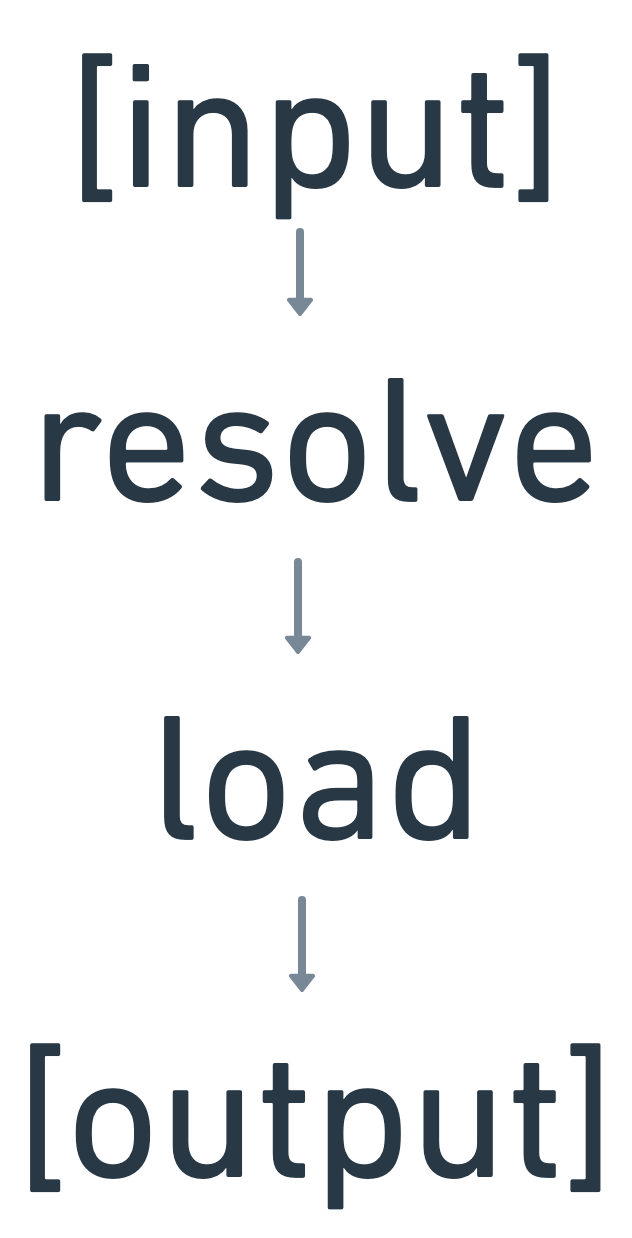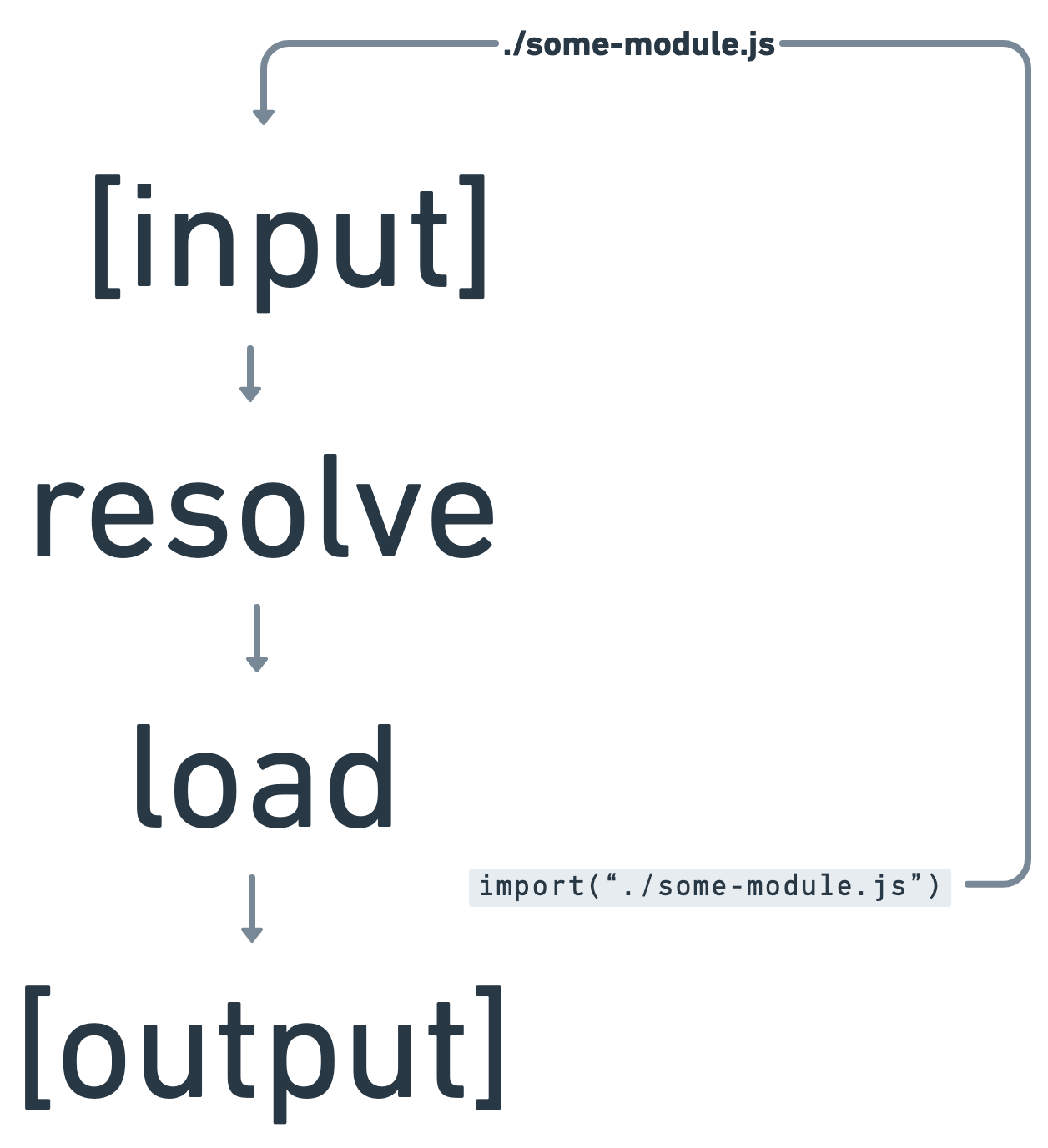An introduction to esbuild plugins
This post provides a brief introduction to esbuild’s build pipeline and plugin api.
What is esbuild?
esbuild is JavaScript bundler that processes files and turns them into a JavaScript bundle that Runtime (like ,node.js, Deno, or your browser) can execute. Many tools also do this, but esbuild’s focus on a small feature set, clean API, and blazing fast speed set it apart. This is why it is used in projects like vite, remix and esm.sh, and many more.
Why write a plugin?
While esbuild does many things out of the box, there are many things it chooses not to do in order to maintain focus and speed. There is a growing list of community plugins that you may — like me — find yourself needing to do something that esbuild does not do out of the box.
A few important things to note:
esbuild’s plugin architecture is just aboutresolving andloading. Anything beyond simple text processing will be up to you. This means if you want to compile your favorite esoteric language to js you will have to run a compiler in yourloader.- Running a compiler in
loadwill (naturally) make your build slower.
- Running a compiler in
- The plugin architecture is simple and fast because it is limited. It may not be possible to do what you want with an
esbuildplugin. - Plugins only work in
goandjavascript. There is awasmversion but it does not have plugin support and is much slower.
An overview
At its core, an esbuild build involves a few steps:
- input
- resolve
- load
- output

Input
input is the file(s) passed to esbuild and any subsequent files resolved in the process of the build (more on that later).
esbuild.build({
entryPoints: ["index.js"]
})If index.js imports another file, that is added to the stack of inputs.
Resolve
The resolve step involves taking a path (an filesystem path or an import/require path) and directing it to something that can load it. Several kinds of paths that can be resolved. A few important ones:
entryPointa file, likeindex.jsimport: an import likeimport(”./util.js”)orrequire(”./foo.js”)or@import(“my.css”)
Load
The load step takes a resolved path from the previous stage and loads the content for that path. This can take the form of reading it from the file system, a url, or creating it on the fly.
Typically, this takes the form of JavaScript, since the output target of esbuild is a JS application, but there is built in support for several different content types
imports and the build “stack”
While the build process can be envisioned as a one-way pipeline, one of the unique features of esbuild is that loaded content can reference other files via imports. This allows the build to become aware of other files in a way that maps the natural grain of a module dependency graph. This means that files can add other files, and the split between resolve and load allows for scenarios where an import can be dynamically resolved from anywhere not just a file system path.
You can think of an import as a way of pushing an input back onto the build stack, which then gets sent through the same familiar build pipeline. This modeling is the core of input processing plugins in esbuild.

Plugins
Now that we’ve explored how esbuild’s build time modeling works, we can launch into the plugin architecture.
By default, esbuild includes resolve and load behavior to handle js/ts, css, json files. It automatically resolves, loads, and generates valid JavaScript output.
Defining a plugin
The docs do a good job of defining the APIs of plugins, but essentially esbuild allows plugins to hook into its build process to contribute to (and/or modify) the build. While, there are many different hooks an esbuild plugin can define, This post will focus purely on the onResolve and onLoad hooks. These hooks are what I am most familiar with and are probably what most plugins will want to use anyway.
The shape of a plugin
A common idiom is to define a plugin as a function that accepts options that your plugin may want to expose. This function then returns an esbuild plugin implementation with whatever hooks you want to use defined:
function myPlugin ({greeting = "world"} = {}) {
return {
name: "MyPlugin"
setup(build) {
// use build hooks here
build.onResolve(/* */)
}
}
}
await esbuild.build({
entryPoints: ["index.js],
plugins(myPlugin({ greeting: "Nick" }))
})Example: A “vanilla” plugin
To make this more concrete, let’s create a simple plugin that replicates what esbuild does internally. We will resolve js files and then transform them in a loader by naively replacing every instance of ! with !!!, just to prove that our plugin is actually handling things.
First, we define our plugin, which is an object with a name property and a setup function:
function vanillaPlugin () {
return {
name: "vanillaPlugin",
setup: (build) => {
// todo
}
}
}now we can concentrate on actually defining how our plugin will interact with the build process:
// in the `setup` block above
build.onResolve({ filter: /\.js$/ }, (args) => {
return {
path: args.path,
namespace: 'vanilla'
}
})All this does is tell esbuild if a file ends with .js let us resolve it, rather than the built-in resolver.
We use the return to pass the original path (e.g. ./src/index.js) on to the loader and a special namespace to indicate that this should be loaded by something within that namespace, rather than a default loader.
Now that we’ve claimed .js files as our own, we need to provide their contents with our own onLoad hook:
build.onLoad({ filter: /.*/, namespace: "vanilla" }, async (args) => {
const contents = await readFile(args.path, 'utf8')
return {
// a simple substitution just to prove that we've
// loaded the file and are transforming it
contents: contents.replace('!', '!!!')
}
})Like onResolve we are passing an object to help us filter down what we should load, but we are now using the namespace property to scope us to the namespace we specified in our onResolve hook:
{ filter: /.*/, namespace: "vanilla" }After that, we simply read the contents from the file system and perform a replace on them. For our simple use case, this works great, this would break a program that relies on ! for logic, and we need to use an ast parser or complicated regex if we wanted to do more fine-grained manipulations.
Our final output looks something like this:
const message = "Meow!!!";Now, onto a slightly more complicated example.
Virtual files
Our first example dealt with files that were already on the file system.
// input.mjs
import { MESSAGE, NAME } from 'config:templates'
export default function hello() {
// this will be inserted by our build step
return `${MESSAGE}, ${NAME}!`
}There is no config:templates module on the file system, so our plugin will resolve and load it with a “virtual” module.
Again, we start with a plugin scaffold:
function templatePlugin({ replacements = {} } = {}) {
return {
name: "templatePlugin",
setup: (build) => {
// todo
}
}
}And we resolve imports that contain config:templates to a plugin namespace
build.onResolve({ filter: /config:templates/ }, (args) => {
return {
path: args.path,
namespace: 'templates'
}
})Now we handle the actual content in an onLoad, by generating the source of config:templates, which is a simple JSON object:
build.onLoad({ filter: /.*/, namespace: "templatePlugin" }, (args) => {
return {
// we are using plugin options here, but this could easily come from a REST call or a database
contents: JSON.stringify(replacements),
// let esbuild know that it should treat this as a `json` file, as opposed to a
// a js file
loader: 'json'
}
})The build output shows esbuild has bundled those hardcoded variables into our program:
(() => {
// virtualFilePlugin:config:templates
var MESSAGE = "Hello";
var NAME = "World";
// examples/2-virtual-files/input.mjs
function hello() {
return `${MESSAGE}, ${NAME}!`;
}
})();This is a simplistic example, but this pattern can be repeated and extended to have multiple recursive imports to build out complicated module trees. All of that is built on the resolve and load primitives that esbuild provides.
:wave:
That was a brief introduction to esbuild plugins; hopefully it can be of some help as you write (or debug) esbuild plugins yourself.
You can see more small examples in my example repository and I would also recommend browsing the community plugins for inspiration!
Happy bundling!
Nick
